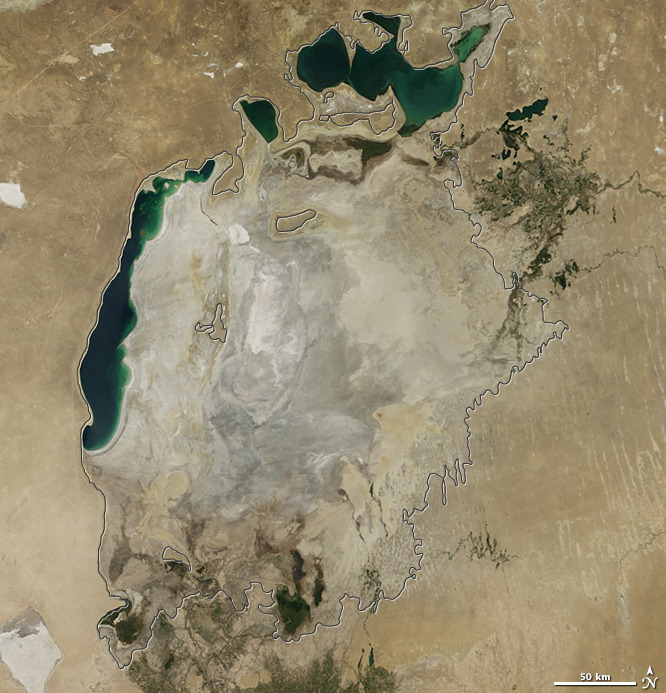Once the world’s fourth biggest lake, Aral Sea now almost completely dry
The Aral Sea, once the fourth-largest lake in the world, is nearly gone. Satellite images released by NASA this week show half of the inland lake that spans the Kazakhstan-Uzbekistan border in Central Asia are almost totally dry. The shrinking began in the 1960s, NASA reported, when the former Soviet Union started diverting the Aral Sea’s snowmelt-fed water from the Syr Darya and Amu Darya rivers to irrigate the desert farms of Kazakhstan, Uzbekistan, and Turkmenistan.
For the first time in modern history, the eastern basin of the South Aral Sea has completely dried.
NASA said in a release
The first satellite image, taken in 2000, shows the lake split in two, creating the Northern and Southern Aral seas. A 2005 emergency dam project by Kazakhstan’s government to save the northern part, followed by a four-year drought, expedited the southern sea’s disappearance. The most recent image, taken in August, shows a dry lakebed where the Southern Aral Sea used to be. In 2003, NASA scientists warned that “complete desiccation” of the sea “could happen in as few as 15 years.” Looks like their prediction is right on schedule.

Science aral sea